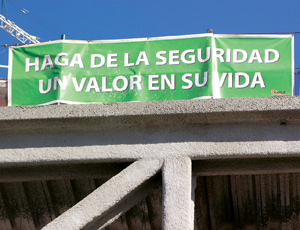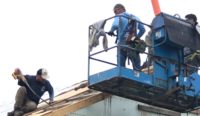Stop mixing messages. That is what a team of safety researchers urged Perini Building Co. to do during worker orientations last fall following an assessment of the CityCenter project and another Perini project nearby. The mixed-message advice was one of the most interesting aspects of the assessment. Although Perini seemed on the surface to have the best safety communication practices, the assessment team claimed that the message was compromised.

Perini’s direct messages seemed to reflect an enlightened attitude toward accident prevention and workplace management, such as protecting workers from reprisals or discipline if they go around their supervisors to complain about unsafe conditions. Everyone is respected and valued, Perini’s orientation staff told new recruits. But in practice Perini delivered another kind of message, according to the assessment report, carried out by a small team from the National Institute for Occupational Safety and Health, a federal agency, and the Center to Protect Workers’ Rights, a union-funded advocate for worker safety. Some of the assessment’s findings were:
• Perini’s translation of orientation messages into Spanish lasted only 15 minutes, while the rest was delivered in English only. The practice delivered a perceived message that communication with Spanish speakers does not matter much.
• Employees were not provided a copy of the rules they had to sign, and some rules differed in advice given to employees about reporting injuries, accidents and near-misses. The perceived message is, inconsistent rules can trip you up.
• Despite providing orientation messages that encouraged workers to report injuries, accidents and near-misses, Perini did not provide employees with a safety phone number, open office hours or advice about how often safety staff makes rounds on the site. In addition, Perini “made no explicit mention of the six fatalities that have occurred on this site, despite the fact that they have received wide press coverage and many at the session are likely to have heard about them.” The perceived message is, Perini may not really want to hear from workers or value communication about safety.
• While Perini’s safety program called for making clear to employees that no one would be disciplined or fired for reporting a hazard or near-miss, even if they were not following all the rules, and that enthusiasm for safety would be welcomed, an orientation instructor told new recruits that he had been called “Safety Hitler” and the message of no discipline for reporting hazards was omitted from the handout. The perceived message is, enthusiasm for safety may set you apart from supervisors and unions, and employees who report a hazard or near-miss may wind up being disciplined or fired if they were notfollowing all the rules.
Has Perini taken the assessment to heart and eliminated all the mixed messages? Craig Shaw, CEO of Perini Building Co., says, “While we believe Perini worksites are among the safest in the world…we are already implementing many of the CPWR’s recommendations.”
Steve Ross, executive secretary-treasurer of the Southern Nevada Building and Construction Trades Council, says the changes include timely management feedback on safety concerns, better organized on-site bilingual resources, immediate review of work-environment criticisms and establishing a toll-free telephone number to accept work-related concerns that individuals wish to communicate in confidence. Another spokesman for the Southern Nevada building trades says improvements on-site and the safety record over the past 11 months “speaks for itself.”

























Post a comment to this article
Report Abusive Comment